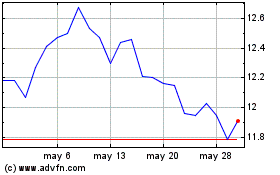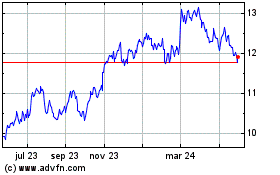Pearson’s School Report 2024 highlights a focus on staff,
digital and diverse solutions to support growing concerns over
pupil disengagement
At least 1.5 million children a week are struggling to engage in
learning according to a new report released today by Pearson (FTSE:
PSON.L) – the world’s leading learning company.
Now in its third year, the Pearson School Report – which brings
together the views of over 12,000 teachers, students and education
sector experts – revealed that in the week asked, 97% of classroom
teachers witnessed children and young people having difficulty
engaging with their learning.
Based on the percentage of students whom teachers identified as
having difficulty engaging, the numbers, which could exceed 1.5
million and be as high as 3.5 million, represent a growing concern
amongst educators across the country. Indeed, in the past year,
almost six in 10 teachers (57%) have become increasingly concerned
about pupil disengagement.
The findings show that the issue is more significant in
secondary schools, with around half of teachers asked (47%) saying
that over a quarter of their students had difficulties engaging
(compared to 37% of primary). A staggering one in eight (13%)
secondary school teachers felt this was affecting as many as 75% of
their students.
What students say
Whilst seven in 10 learners surveyed (68%) shared their
enjoyment of school, a similar number (73%) admitted that they
struggled to engage in lessons and one in five (19%) shared that
they struggled ‘a lot’. Among the top five things students said
impacted their learning are a lack of understanding (45%), not
feeling clever enough (30%), feeling unwell (23%), struggling to
engage in the same way as classmates (21%), and being hungry
(17%).
Embracing opportunities
With the challenges schools face in mind, teachers suggested
that a range of diverse and digital solutions could be introduced
to combat pupil disengagement.
When asked what would support student engagement,
additional staff to support pupils topped the list (identified by
85% of teachers). Other suggested solutions included:
- Making curriculum content relevant to students' lives
(64%)
- Additional vocational/hands-on learning options (57%)
- Access to diverse resources and texts (46%)
- Increased use of digital tools (38%) and devices (39%)
- Enhanced access to extracurricular activities (47%) and clubs
(44%)
- Focusing on life skills (54%)
Students also said similar with over a quarter noting access to
digital devices (21%) and extracurricular activities (29%) as
elements that had helped their learning. What stood out the most
however, was the support from teachers – with over half of all
students (51%) saying support from their teacher had helped their
learning in the past year or two. Over a quarter also referenced
the work of support staff (26%).
Making an impact
What’s clear from the research is that teachers are really
rising to the challenge and going the extra mile to help students
engage. Feedback on solutions being implemented in schools include
focusing on and adapting content so that it’s relevant to their
students’ lives today, utilising digital tools to record and stream
lessons to support different learning styles as well as providing
the opportunity for absent students to catch up on missed
lessons.
One secondary teacher spoke proudly of: “the moment when a
disillusioned teen sat with me and said ‘Ok, now I’m ready to
learn’, having refused to properly engage for weeks, and was then
able to sit with me and explain what that looked like and set
targets.”
Another said their reason for seeking new solutions was: “when
dealing with very vulnerable students with difficult lives, letting
them see something different and helping them to see themselves
differently, with merit and purpose. But every day, just trying to
make school a positive experience for young people who don't want
to be there.”
Speaking about the findings, Sharon Hague, Managing Director,
School Assessment and Qualifications at Pearson, said: “While
the challenges raised in our findings may seem stark at times, the
proactivity and positivity of educators in seeking solutions and
making a difference shine through. But they cannot do this alone.
Whether it’s teachers innovating with digital resources, diverse
content or adapting content so that it’s relevant to students lives
today, we need to listen to what works and share that success far
and wide.
“There is no ‘one size fits all’ approach when it comes to
education. Through our own pilots and wider research, we have seen
the staggering difference technology and adaptations are making to
students. We are committed to sharing the voices of students,
school staff and those in the sector as we strive to play our part
in engaging this generation and those to come.”
Carl Ward, Chair of the Foundation for Education Development
(FED) concluded: “By listening to those directly involved in
the education system, we can develop strategies that resonate with
students’ needs and experiences whilst ensuring the system is
tailored to prepare them for the challenges and opportunities of
our changing world.”
To see what else teachers and students had to say about
education in 2024 – from challenges and opportunities to solutions
and aspirations for the future - view the Pearson School
Report.
About Pearson
At Pearson, our purpose is simple: to add life to a lifetime of
learning. We believe that every learning opportunity is a chance
for a personal breakthrough. That’s why our c.18,000 Pearson
employees are committed to creating vibrant and enriching learning
experiences designed for real-life impact. We are the world’s
leading digital media learning company, serving customers in nearly
200 countries with digital content, assessments, qualifications,
and data. For us, learning isn’t just what we do. It’s who we are.
Visit us at pearsonplc.com
About the research
Pearson commissioned a nationally representative external survey
of primary and secondary educators* between 20/03/24 and 13/04/24
to capture their views. Between, 6,932 and 10,015 responded to the
questions. Responses were collected by the polling organisation
Teacher Tapp and weighted to reflect national teacher and school
demographics.
Student research was also conducted by Censuswide between
23.04.2024 - 29.04.2024 with 1,003 primary school children (aged
7–11 years) and 1,002 secondary school children (aged 11–16 years).
Censuswide abides by and employs members of the Market Research
Society which is based on the ESOMAR principles.
View source
version on businesswire.com: https://www.businesswire.com/news/home/20240626966442/en/
anna.osullivan@pearson.com
Pearson (NYSE:PSO)
Gráfica de Acción Histórica
De Dic 2024 a Ene 2025

Pearson (NYSE:PSO)
Gráfica de Acción Histórica
De Ene 2024 a Ene 2025
